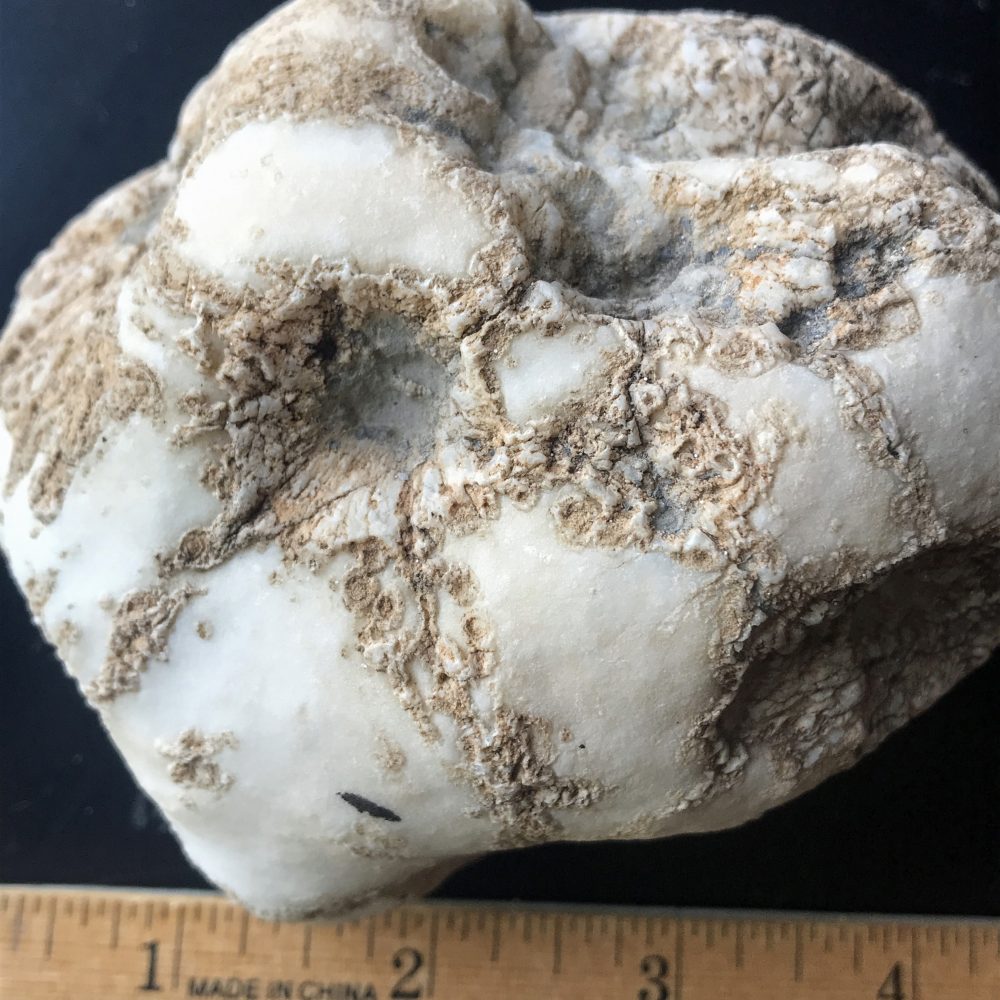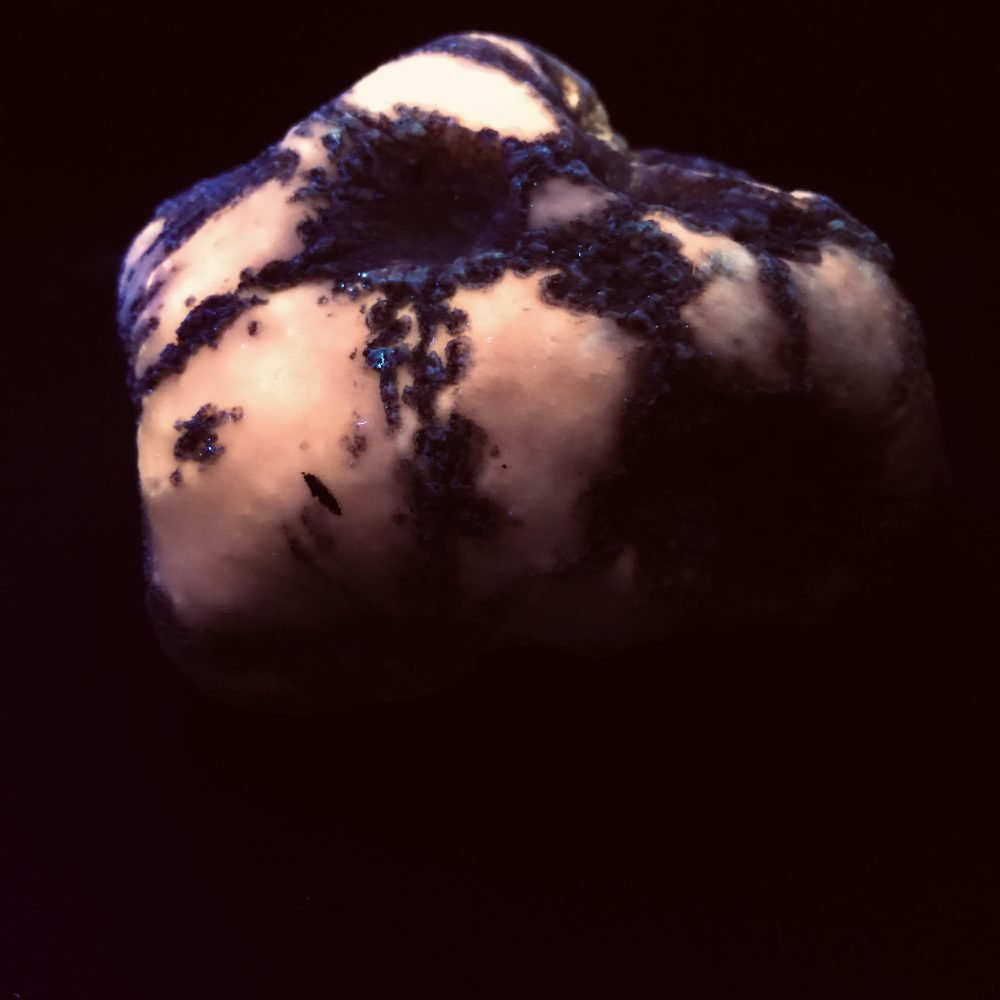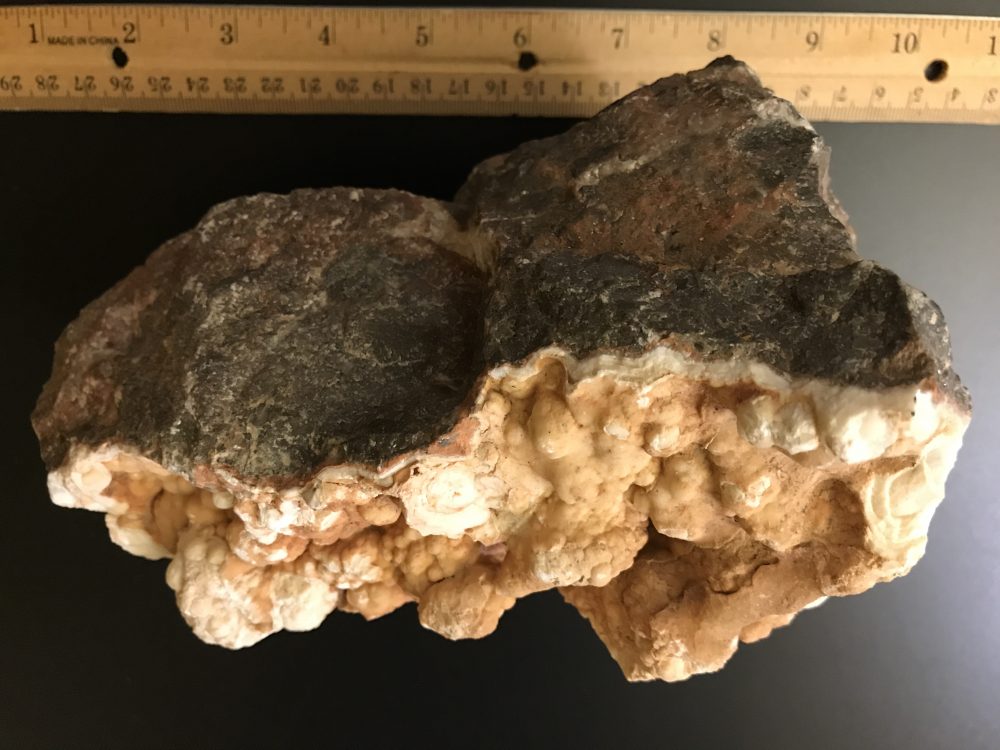Important note from RC. The limestone comes first, not the calcite. In the post I have the process reversed.
Saturday, September 14, 2023
Picked up an odd rock today along the Old Spanish Trail, not far from the Junction of Highway 160. in Clark County, Nevada. What Macrostrat.org calls young fan alluvium. Lots of limestone and sandstone bits and pieces. Didn’t see anything like this rock. It has notable pockets around the rock and then lines of heavily marked material evenly radiating out from them.
There is chunk of what may be limestone at the bottom of each pocket. It reacts little to acid but I think I see some activity. The white material, less that 2 on the Mohs scale doesn’t react because it is so porous the acid soaks it up before doing anything! The white material fluoresces a strong orange/red while the pockmarked lines, full of circle and bubble shapes, does not do anything under UV.
It strikes me somewhat as being like the calcite material which I saw recently at the Kokoweef Cavern Mine complex. There are a few dead springs in the surrounding area, I am wondering if this has something to do with being formed or acted on by a spring. But I don’t know why these lines would radiate from those pockets. Or why there would be pockets in the first place.
September 16, 2023
I’ve been thinking this over by myself. No one on Mindat.org of FB has made any suggestions as to what formed the rock, other than it might be gypsum. Which it is not, much too soft for gypsum. I have a reference specimen of rock gypsum, unweathered, and a self-collected piece, weathered, from Shark Tooth Hill in Kern County, California. Both those rocks are chalky and too soft to compare with the mystery rock.
Here is my working theory. The white material is calcite, a mass of which formed around several limestone rocks. At some point the mass became tumbled and rounded in the small desert wash or channel that I collected it from. Being very absorbent, the round mass picked up rainwater which would contain carbon dioxide. A weak carbonic acid would develop when the limestone reacted to that. The limestone is now eating away at the calcite, dissolving the material over the centuries.
The pockets you see are all centered on where a piece of limestone is located. The residue seen in the lines is the acidic precipitate left by this slow destructive process. Thus, that residue or the limestone does not respond to UV, being limestone and limestone related, while the calcite (the white mass or host) responds to UV as most calcite does.

—
Under SW UV. Forgive the “blue bleed”, a common sight when photographing glowing rocks.

—
R.C. has just checked in. “If it’s calcite, no surprise. Rainwater dissolves limestone, which is calcite. Limestone typically has fractures which gradually get enlarged as rain water makes its way through. This is how cave systems form. The calcium carbonate (calcite) dissolved in the rainwater is what forms stalactites and stalagmites in caves, and it commonly fills in fractures between blocks of limestone.”
So, do we have a rock that was once a fractured piece of limestone, now with calcite accreting around the remaining pieces? In other words, this may not have been a mass of calcite to begin with, rather it was a block of limestone that started this all off. And then it transformed into what is seen today. Hmm. Still pondering.
—
—
Kokoweef material self-collected on mine dumps by permission. Limestone rock on top and “popcorn calcite” underneath, the calcite carbonate deposited in the form you see here. It is unknown whether this rock came from the cavern roof, its floor, or a wall.
This popcorn calcite responds weakly under SW, producing an uninteresting cream color. It does have a short but notable phosphorescence or afterglow.

——
Follow me on Instagram: tgfarley
https://www.instagram.com/tgfarley/












